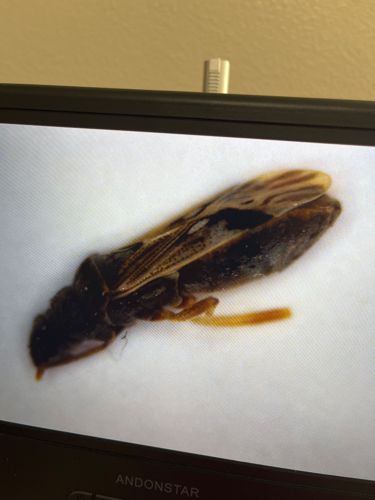Leafhopper
Scientific Name: Cicadellidae (family)
Order & Family: Hemiptera, Cicadellidae
Size: Typically 2-15 mm (0.08-0.6 inches) in length, though some species can be larger.

Natural Habitat
Found in diverse terrestrial habitats, including grasslands, forests, agricultural fields, and gardens, wherever host plants are present.
Diet & Feeding
Herbivorous; they feed on plant sap by piercing plant tissues with their needle-like mouthparts (stylets) and sucking out fluids from the xylem or phloem.
Behavior Patterns
Leafhoppers are active during the day. Many species are known for their jumping ability, which they use to escape predators. They undergo incomplete metamorphosis (egg, nymph, adult). Nymphs often resemble smaller, wingless versions of the adults. Some species migrate long distances.
Risks & Benefits
Potential risks include being significant agricultural pests, known to transmit plant diseases (e.g., viruses, phytoplasmas, bacteria) which can cause substantial crop damage. While generally not harmful to humans, a few species can cause minor skin irritation if they probe human skin. Benefits include serving as a food source for other insects, spiders, birds, and other animals, contributing to the food web.
Identified on: 9/5/2025